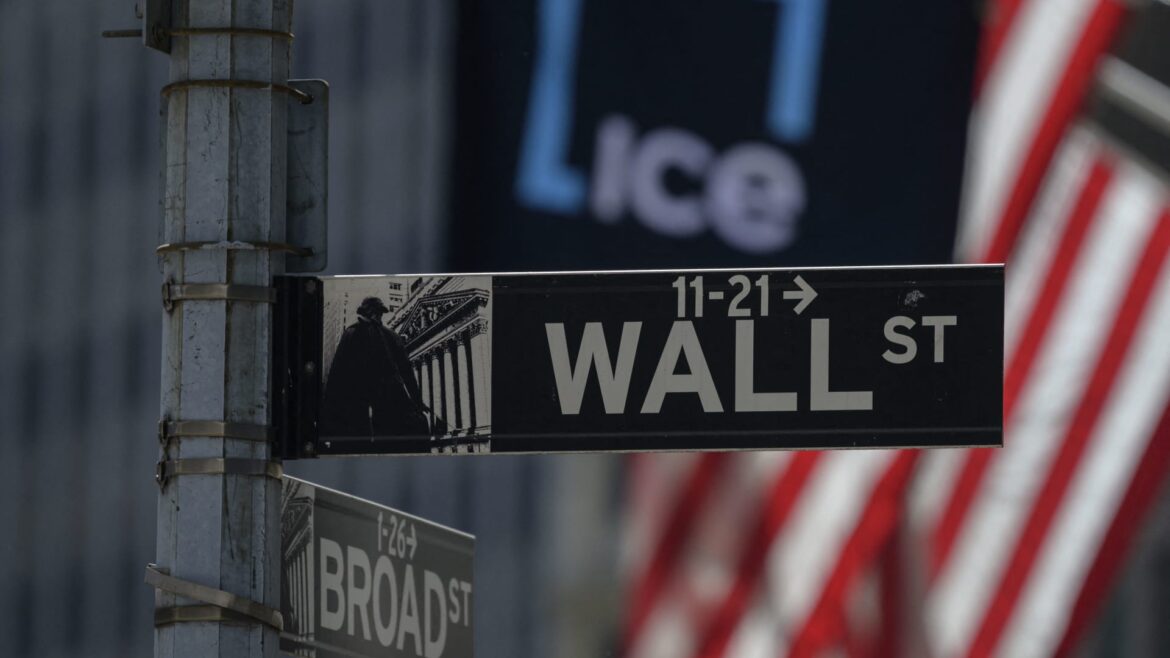
Fitch Ratings downgrades China outlook to negative as economic concerns rise
Source link
ratings
If you’re trying to find top stocks, look for IBD Ratings above 90. Today, only two stocks have best-possible Composite, EPS and Relative Strength Ratings of 99 — an extremely rare occurrence.
X
Each rating compares the stock with others in our database and assigns scores relative to the rest of the database. The EPS Rating compares a stock’s current and annual earnings with those of other stocks. The Relative Strength Rating compares the stock’s price performance over 52 weeks with other stocks in the database.
The Composite Rating combines those two ratings plus the Accumulation/Distribution, industry group strength and SMR Ratings. The stock’s percentage off its 52-week high is also a factor that influences the Composite Rating.
It’s rare for any stock to achieve 99s in two ratings, let alone three.
GigaCloud Technology (GCT) is one of them. The stock is in the IBD 50 list of growth stocks. Shares climbed to new highs at 18.60 last week, in what may be considered a deep cup base.
Sales growth ranged from 11% to 39% over the past eight quarters. Earnings have grown over the past five quarters after a series of declining profits.
For the third quarter, sales grew 39% to $178.2 million. Earnings growth was more impressive. EPS of 59 cents surged from 2 cents in the prior year’s quarter. GigaCloud went public in August 2022 at 12.25 a share. The company provides a platform for payments and other transactions for businesses.
Top Stocks: M-Tron Nears 52-Week High
The other stock is also a recent new issue. M-Tron Industries (MPTI) is in a base with a buy point of 39.77, according to IBD MarketSmith. The buy point is also the stock’s 52-week high.
Sales growth ranged from 10% to 44% in the past seven quarters, while earnings growth over the two most recent quarters was impressive. Third-quarter earnings per share of 57 cents showed 200% growth; Q2 EPS jumped 161%.
M-Tron went public in October 2022. M-Tron makes radio frequency components used in radars, computers, servers and communication technologies.
Please follow VRamakrishnan on X/Twitter for more news on the stock market today.
YOU MAY ALSO LIKE:
Top Growth Stocks To Buy And Watch
Learn How To Time The Market With IBD’s ETF Market Strategy
Find The Best Long-Term Investments With IBD Long-Term Leaders
MarketSmith: Research, Charts, Data And Coaching All In One Place
How To Research Growth Stocks: Why This IBD Tool Simplifies The Search For Top Stocks
Bitcoin Price Briefly Revisits $30K after Ratings Agency Moody’s Downgraded US Banking Sector
Increased Bitcoin demand from institutional investors led by the ETF frenzy and new stablecoins launch has widened crypto liquidity and trading volume.
The United States market has in the past few months doubled down its interest in digital assets as the Federal Reserve pushes its limit to lower the inflation to the desired 2 percent. With Bitcoin’s current inflation below 1 percent, and expected to halve in less than a year, institutional investors in the United States led by BlackRock Inc (NYSE: BLK) have shown increased interest in Bitcoin and other digital assets. As a result, Bitcoin price has continued to gain more momentum in favor of banking stocks that have struggled YTD. Furthermore, the banking sector experienced a contraction period earlier this year when several regional banks in the United States and around collapsed due to low deposits and customer retention.
Bitcoin Price
According to the latest crypto price oracles, Bitcoin suddenly rebounded from a bearish outlook to briefly trade above $30k on Tuesday. Undeniably, several reasons contributed to the sudden rise of Bitcoin on Tuesday. Among the top reasons include the increased demand by institutional investors, which led rating agency Moody’s to put the U.S. banking sector on a downgrade watch.
Notably, the firm changed its outlook to negative for 11 banks, including Capital One, Citizens Financial, and Fifth Third Bancorp. The downgrade follows the recent revelation of banks struggling to make profits and generate internal capital according to Q2 results.
“US banks continue to contend with interest rate and asset-liability management (ALM) risks with implications for liquidity and capital, as the wind-down of unconventional monetary policy drains systemwide deposits and higher interest rates depress the value of fixed-rate assets,” Moody’s analysts Jill Cetina and Ana Arsov said in a research note.
Notably, experts believe Bitcoin price is well positioned to rally beyond $100k in the next few years, with some predicting $1 million per coin by 2030. The ambitious rally is expected to be fueled by global hyperinflation and mainstream adoption of digital assets. As a result, the traditional banking sector has continued to bleed its customers into the new banking industry using modern technology like Artificial Intelligence (AI) and blockchain.
“Bitcoin is holding strong. The correlation between the stock market and bitcoin is decoupling as bitcoin has proven to be a beneficiary of banking turmoil,” Greg Magadini, director of derivatives at Amberdata.
Bigger Picture
Most crypto analysts believe Bitcoin price will not revisit its ATH and beyond until after next year’s halving as it has performed historically. The Bitcoin halving is expected to take place during the first half of 2024 when the BTC miners will receive half the reward per block. Meanwhile, an accumulation phase could lead to a Bitcoin correction towards $25k as the top coin establishes a solid support base.
next
Bitcoin News, Cryptocurrency News, News

Let’s talk crypto, Metaverse, NFTs, CeDeFi, and Stocks, and focus on multi-chain as the future of blockchain technology.
Let us all WIN!
You have successfully joined our subscriber list.
Subscribe to our telegram channel.
Join
Moody’s cuts ratings of 10 U.S. banks and puts some big names on downgrade watch
A general view of the New York Stock Exchange (NYSE) on Wall Street in New York City on May 12, 2023.
Angela Weiss | AFP | Getty Images
Moody’s cut the credit ratings of a host of small and mid-sized U.S. banks late Monday and placed several big Wall Street names on negative review.
The firm lowered the ratings of 10 banks by one rung, while major lenders Bank of New York Mellon, U.S. Bancorp, State Street, Truist Financial, Cullen/Frost Bankers and Northern Trust are now under review for a potential downgrade.
Moody’s also changed its outlook to negative for 11 banks, including Capital One, Citizens Financial and Fifth Third Bancorp.
Among the smaller lenders receiving an official ratings downgrade were M&T Bank, Pinnacle Financial, BOK Financial and Webster Financial.
“U.S. banks continue to contend with interest rate and asset-liability management (ALM) risks with implications for liquidity and capital, as the wind-down of unconventional monetary policy drains systemwide deposits and higher interest rates depress the value of fixed-rate assets,” Moody’s analysts Jill Cetina and Ana Arsov said in the accompanying research note.
“Meanwhile, many banks’ Q2 results showed growing profitability pressures that will reduce their ability to generate internal capital. This comes as a mild U.S. recession is on the horizon for early 2024 and asset quality looks set to decline from solid but unsustainable levels, with particular risks in some banks’ commercial real estate (CRE) portfolios.”
Regional U.S. banks were thrust into the spotlight earlier this year after the collapse of Silicon Valley Bank and Signature Bank triggered a run on deposits across the sector. The panic eventually spread to Europe and resulted in the emergency rescue of Swiss giant Credit Suisse by domestic rival UBS.
Though authorities went to great lengths to restore confidence, Moody’s warned that banks with substantial unrealized losses that are not captured by their regulatory capital ratios may still be susceptible to sudden losses of market or consumer confidence in a high interest rate environment.
The Federal Reserve in July lifted its benchmark borrowing rate to a 5.25%-5.5% range, having tightened monetary policy aggressively over the past year and a half in a bid to rein in sky-high inflation.
“We expect banks’ ALM risks to be exacerbated by the significant increase in the Federal Reserve’s policy rate as well as the ongoing reduction in banking system reserves at the Fed and, relatedly, deposits because of ongoing QT,” Moody’s said in the report.
“Interest rates are likely to remain higher for longer until inflation returns to within the Fed’s target range and, as noted earlier, longer-term U.S. interest rates also are moving higher because of multiple factors, which will put further pressure on banks’ fixed-rate assets.”
Regional banks are at a greater risk since they have comparatively low regulatory capital, Moody’s noted, adding that institutions with a higher share of fixed-rate assets on the balance sheet are more constrained in terms of profitability and ability to grow capital and continue lending.
“Risks may be more pronounced if the U.S. enters a recession – which we expect will happen in early 2024 – because asset quality will worsen and increase the potential for capital erosion,” the analysts added.
Though the stress on U.S. banks has mostly been concentrated in funding and interest rate risk resulting from monetary policy tightening, Moody’s warned that a worsening in asset quality is on the horizon.
“We continue to expect a mild recession in early 2024, and given the funding strains on the U.S. banking sector, there will likely be a tightening of credit conditions and rising loan losses for U.S. banks,” the agency said.




